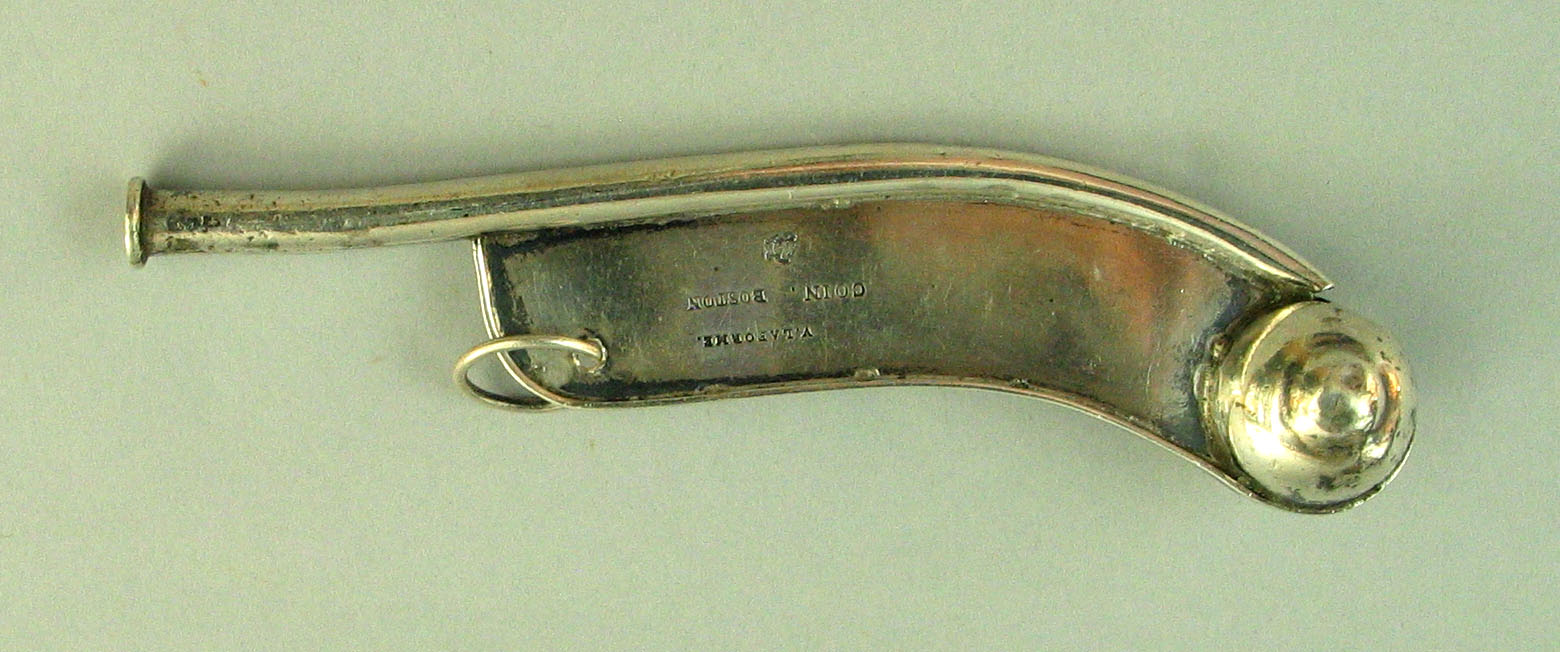Heigh, my hearts! cheerly, cheerly, my hearts!
yare, yare! Take in the topsail. Tend to the
master’s whistle. Blow, till thou burst thy wind,
if room enough!– William Shakespeare’s The Tempest, Act 1, Scene 1
Holding a warrant from the U.S. Navy Department, the boatswain was in charge of the ship’s sails, rigging, flags, anchors, cables, and boats — in short, the entire physical fabric of the ship excluding the hull (which was the purview of the carpenter). He made daily rounds to examine the condition of the ship, and reported to the sailing master and first lieutenant.
While he looked after the ship’s well-being, it was “likewise his office to summon the crew to their duty; to assist with his mates in the necessary business of the ship; and to relieve the watch when it expires.” To accomplish this, each boatswain and his mates carried a small silver whistle called a “pipe” or “call.” The shrill tweets from the call cut through the noise of wind and water and formed an indelible part of the soundscape of any sailing warship.
In March 1826, Constitution’s Chaplain George Jones outlined the role of the boatswain and his call played in the everyday life of the ship.
“The week days are all alike; so one day will answer for the whole. At day light, the drums are ordered up, for the reveille; but the slumbers of the sailors are first broken, as it is meet they should be in such a place, by the reports of guns. They are the night guns of the sentries, which are fired off at the first tap of the drum: the reveille succeeds; and by the time this is over, the boatswain with his mates, are stationed on the gun deck, close by the main hatch: he gives a long pipe, which they answer by similar ones: a long one succeeds, repeated also: and then is the cry, “all hands, ahoy,” echoed by the mates, in deep and lengthened tones. Then comes another long pipe; and their brazen voices are heard, “all hands up hammocks, ahoy.” The men spring from their hammocks, lash and carry them on deck, and stow them away in the nettings: twelve minutes are allowed for this. The boatswain reports the main deck clear, to the lieutenant of the watch; and a similar report is made from the officer of the birth deck.”
The whistle as a naval badge of office goes back centuries. Starting in the 15th century and perhaps earlier England’s Lord High Admiral was given a golden whistle and chain as a mark of his importance. Five silver calls, some complete with their silk suspension ribbons, were recovered from the wreck of the Mary Rose, lost in the Solent off Portsmouth, England in July 1545. Several of the calls are similar to a common sort of silver whistle found frequently on medieval sites.
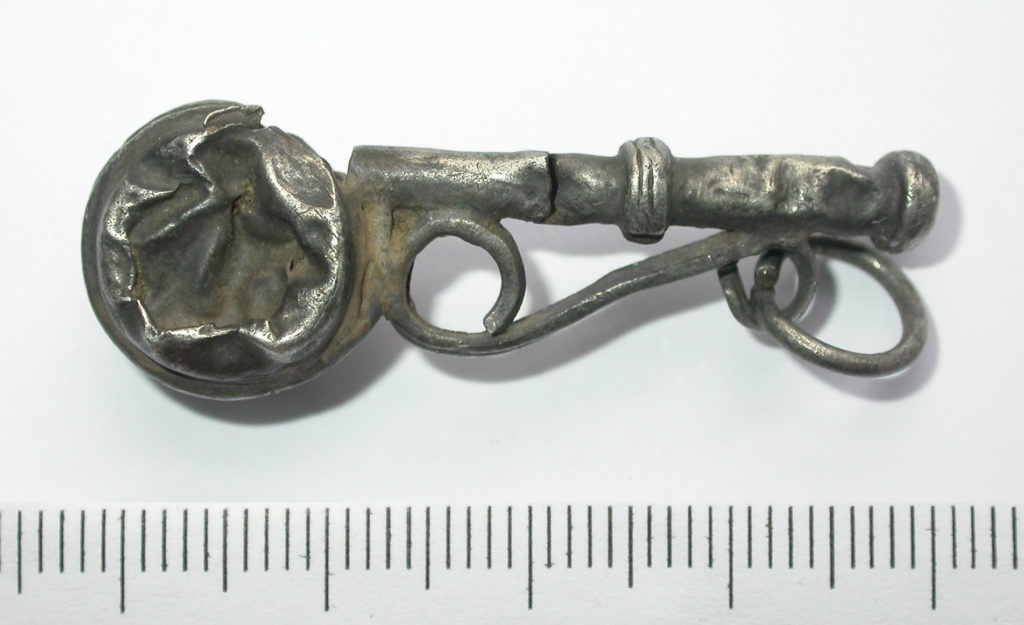

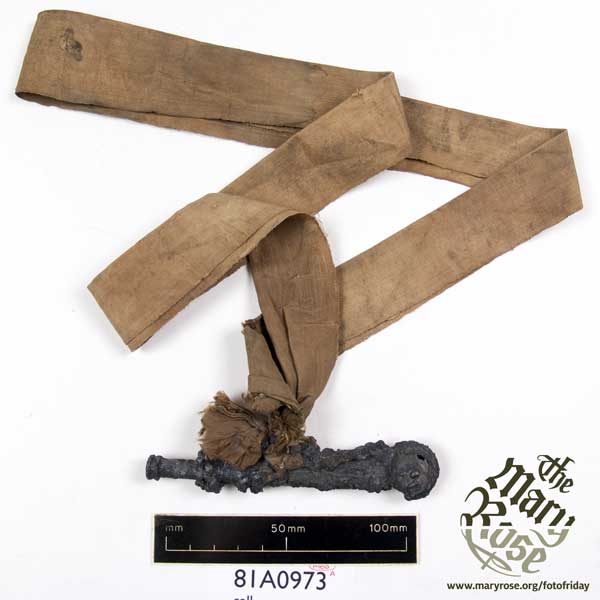

All calls from the Middle Ages onward share similar characteristics. Putting the pipe to his lips, the player blew into a tube called the “gun.” The air passed over a hollow ball at the end, often called a buoy, and produced the pipe’s shrill sound. Have a listen to modern U.S. Navy boatswain’s calls here.
By the 18th century, most calls were made of silver and were hung from the neck by a silver chain. Frequently, the chains descended from a silver breastplate or medallion, often shaped like a heart. The combination of chain, pipe, and plate transformed what could have been nothing but a utilitarian tool into a glorious mark of rank majestic as any dirk or sword dangling by a commissioned officer’s side.
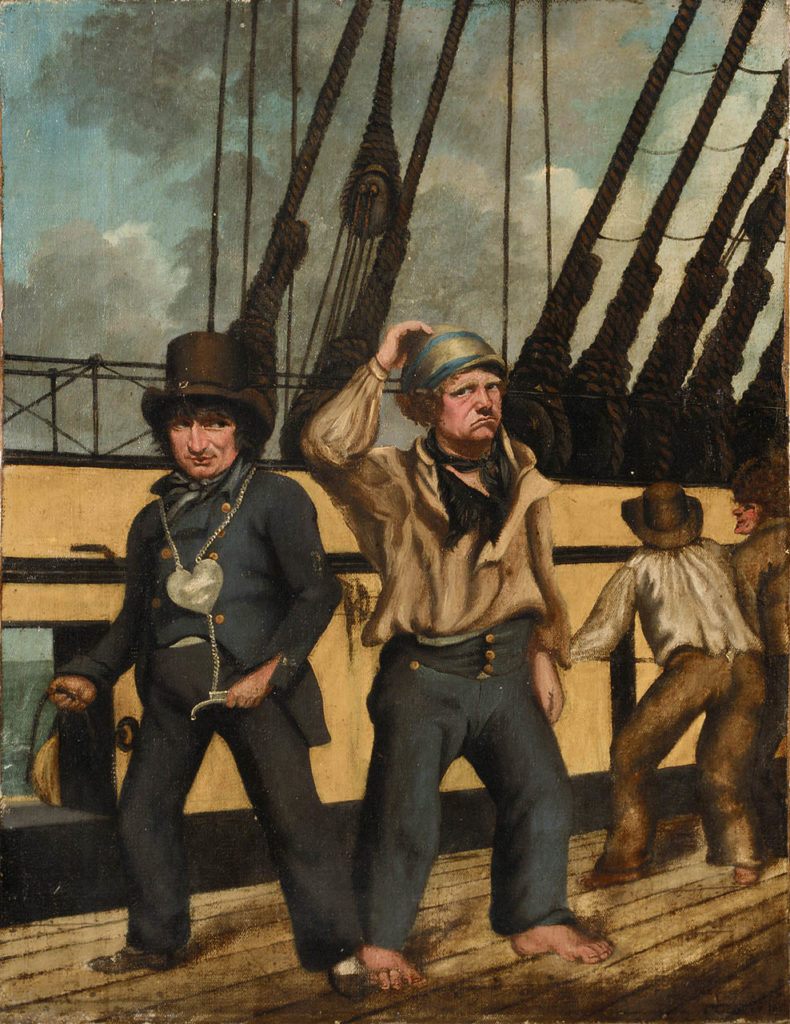

Perhaps the most extravagant call ever to grace an American boatswain’s chest came into the possession of sailor Jerry Miller, who served on U.S. schooner Enterprize during the Quasi-War with France in the 1790s:
“Then we fell in with, and took the Eagle & the Porpoise, then the Le Flambeaux. We took her in ourselves, as we had reduced our crew down to seventeen men, be sending so many prize crews home. After taking from this vessel a most valuable cargo and much gold and gems, sent her down to St. Bartholomews and sold her.= she was a splendid vessel & sailed like the wind. She was taken to a ship yard, and was undergoing repairs. They found large quantities of money stowed away in her limbers and skin. In this Prize was found a very large gold call with a massive gold chain and breast plate of the same metal. He being acting Boatswain, all the officers and men voted it to him. He had engraved on the breast plate – ‘Hurrah for the Enterpize, success to Captain Shaw, Washington and Liberty forever.’ After receiving his discharge went to Baltimore, received a check on the mint in Philadelphia for his prize money, it being $1140.”
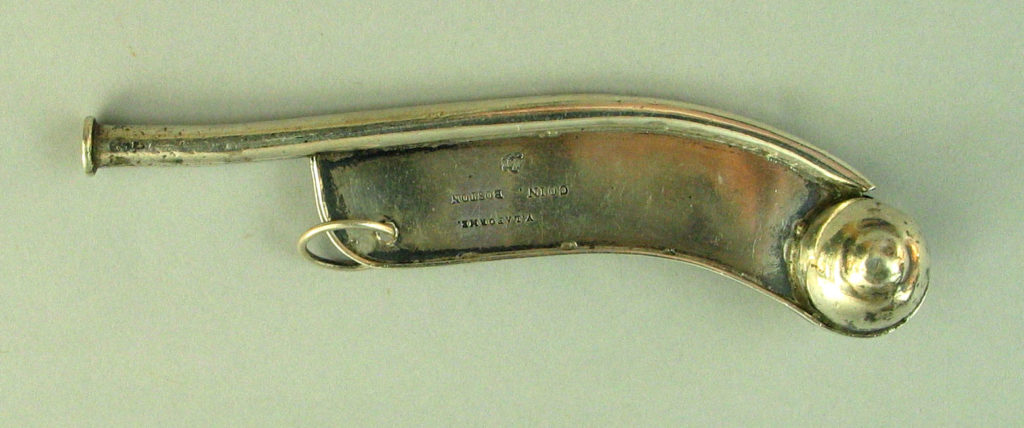

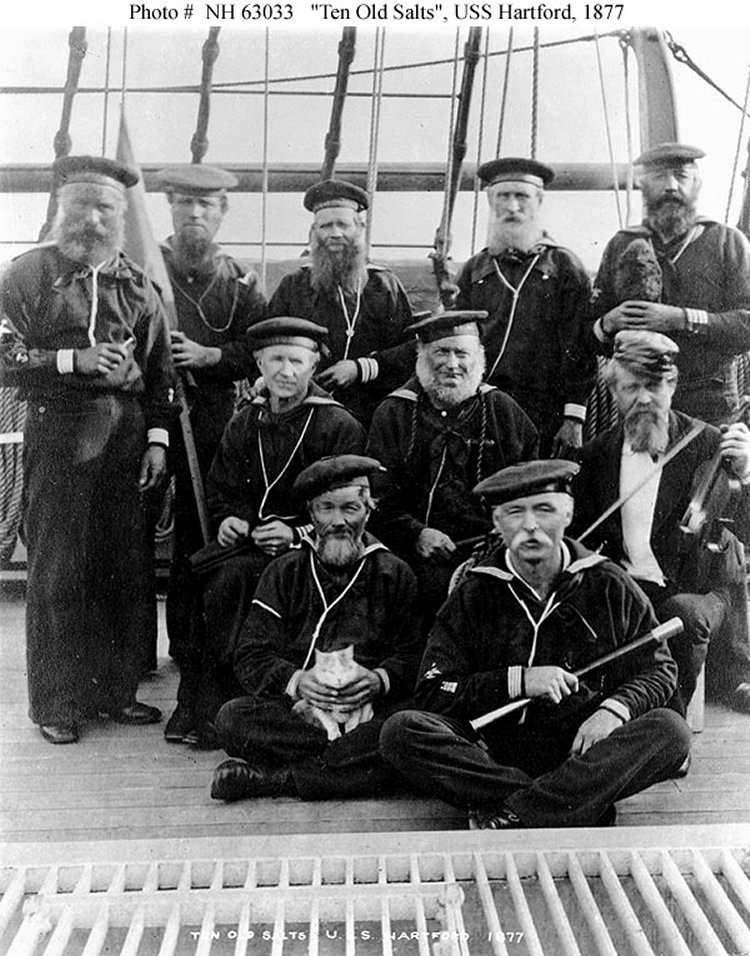

The Author(s)
Matthew Brenckle
Research Historian, USS Constitution Museum
Matthew Brenckle was the Research Historian at the USS Constitution Museum from 2006 to 2016.
